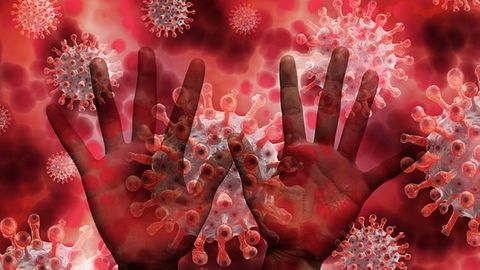
The CDC may lower the days someone needs to be quarantined because of COVID exposure from the current 14, to from 7 to 10 days. That range is troublesome: Which is it, 7 or 10?
There are two pivotal pieces of news that will likely impact infection prevention efforts in the coming weeks. Aside from the hopeful news of vaccine candidates, the Centers for Disease Control and Prevention (CDC) also might be lessening the quarantine time for those exposed to coronavirus disease 2019 (COVID-19). Currently, the recommended quarantine time is 14 days from the last known date of exposure to a person with suspected or confirmed COVID-19. It has more recently been reported that it’s likely this guidance will go down to 7-10 days and a negative SARS-CoV-2 test.
What does this mean for infection prevention efforts? While healthcare workers are often able to work following an exposure due to the use of PPE and self-monitoring, this will likely impact community-based quarantine efforts. The range though is concerning—is it 7 or 10 days? From
my experience, it’s best not to leave a range, but rather provide a specific guidance that doesn’t allow for bias. Perhaps the guidance will state that a required test during quarantine can only be performed after day 7 but will not shorten the 10-day quarantine period if it’s negative. In either case, the more specific the guidance, the better it is for implementation and communication to the public. This is also be determined by local public health department efforts and if they choose to follow the CDC’s guidance or stick to the existing 14 days.
This possible guidance comes as we put the long Thanksgiving weekend in the rearview mirror but, unfortunately, we’re nowhere near putting COVID-19 behind us. As of this writing, the United States has reported over 12.7 million cases of COVID-19, resulting in more than 254,000 deaths. These numbers will only increase as time progresses and we see the fallout of the holiday that had too many people traveling, and the winter months bringing more people indoors in a time of pandemic fatigue. From the holidays to cold weather and traveling, this will be a challenging time of year for all of us.
The second piece of news was the authorization of the first at-home novel coronavirus test. The Food and Drug Administration (FDA) announced recently that they had given the first rapid SARS-CoV-2 at-home test approval. Katherine Wu, MD, recently wrote in the New York Times that “laboratory tests that look for the coronavirus’s genetic material using a technique called polymerase chain reaction, or P.C.R., are still considered the gold standard for detecting the virus. But the new at-home test relies on similar principles by using a method called a loop mediated amplification reaction, or LAMP. Like P.C.R., LAMP repeatedly copies genetic material until it reaches detectable levels, making it possible to identify the virus even when it is present at only very low levels in the respiratory tract. While faster and less cumbersome than P.C.R., LAMP is generally thought to be less accurate.”
While this is exciting news for more accessible testing, there is still concern with how it will be used and the communication to the public that a test is a single moment in time. Moreover, what we gain in speed, we lose in accuracy. Also, how will these results be reported to the local health department? There are a variety of questions that come with these advancements and while we can all safely say that more accessible and quick testing is important, the nuances of how they are deployed is critical.
"front" - Google News
November 29, 2020 at 10:53PM
https://ift.tt/39qn46r
Closely Examine the 'Good News' on COVID-19 Front - Infection Control Today
"front" - Google News
https://ift.tt/3aZh1mr
https://ift.tt/3b2xvu5
No comments:
Post a Comment